Directors – Hao Wu, Weixi Chen, Anonymous – 2020 – China, US – Cert. 12– 93m
***1/2
A US documentary edited out of footage shot on the Wuhan Covid-19 hospital frontline by two Chinese reporters allowed access – on VoD from Friday, January 22nd
Documentary film making is a curious medium – one might even say genre – and this is a curious piece of work. On the level subject matter, it hits paydirt. The city of Wuhan, China has a population of 11 million. When it went into lockdown on January 23rd, 2020 as the authorities attempted to curtail the spread of Covid-19, who knew a global pandemic was coming? Few if any in the West and perhaps no-one in China either.
Be that as it may, two journalists, Chen and one who has kept his / her name off from the film, started shooting what was happening in four hospitals in that city, a lockdown which continued for the eponymous 76 days until the local outbreak was considered safely under control. Given what happened later, interest in the footage they shot and the film subsequently made is now far greater than they may have initially imagined.
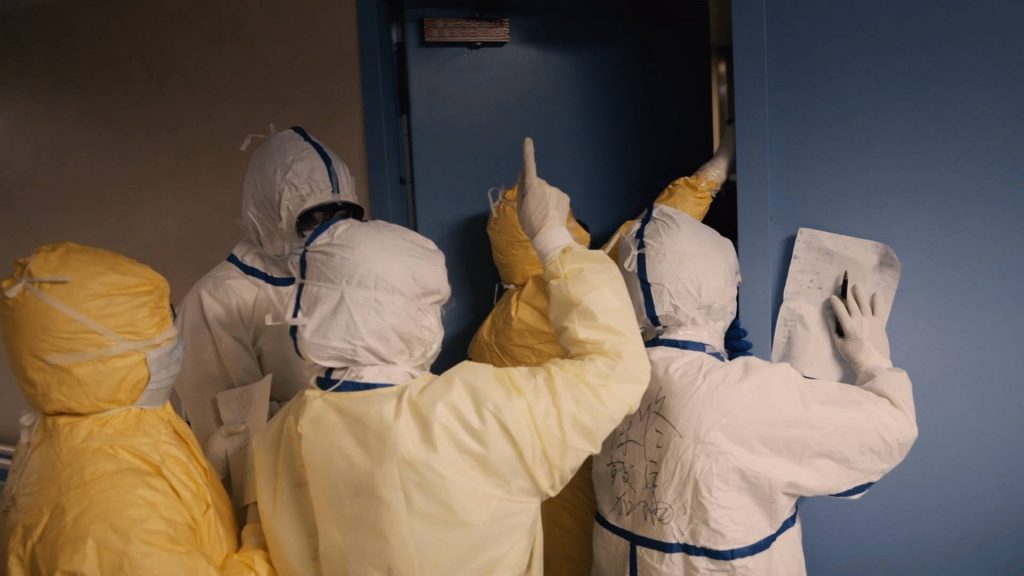
Documentary film maker Wu was appalled by China’s initial cover-up of what was happening in Wuhan and sought out journalists who’d had access to events and documented them on camera with a view to exchanging information and making a film himself about the pandemic situation in the US, a project eventually cancelled.
Wu started editing the footage from the two Wuhan journalists in a basement whilst under a 14 day quarantine in Atlanta. You wouldn’t know there were four hospitals since he follows a number of patients as if they were all in the same institution. Most of the footage is shot inside hospital buildings such as wards, corridors and lifts. The minimal footage of Wuhan streets and outside spaces serves as little more than establishing shots showing you the state of the city at various points during the 76 days – bicycles being piled in an alleyway to clear the street, then a deserted city where no-one is about and, finally, a city were all-clear sirens are sounded as a mark of respect for all those the virus has taken during lockdown.
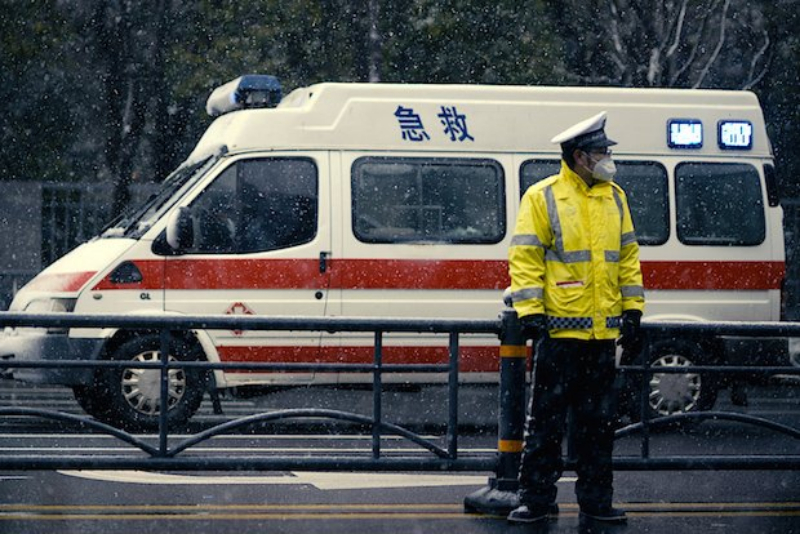
Watching the film as a Brit, the Personal Protective Equipment (PPE) worn by medical staff and volunteers makes an immediate impression because they appear to be wearing much more comprehensive protection than we’ve seen here. As well as bonnets and face masks (sometimes one face mask covering another) they have what look like full biohazard hooded suits, gloves and boots, taped down at the wrists to protect the wearer. Probably very hot and difficult to work in, although none of the staff here are seen to complain. (Apparently the two journalists who shot footage were wearing the same, stifling equipment with no toilet breaks during a shift.)
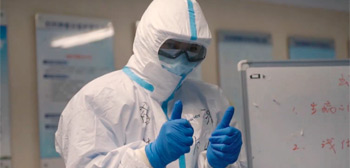
The suits are made more palatable by the addition of names, personalised slogans or images written or drawn in thick felt pen and in one of the lighter moments were see these being added while the clothing is being worn by those on the job.
Rather than examining how the authorities dealt with the crisis, the piece follows the day to day workings of medical staff looking after their patients on the front line. It picks up and follows a number of stories.
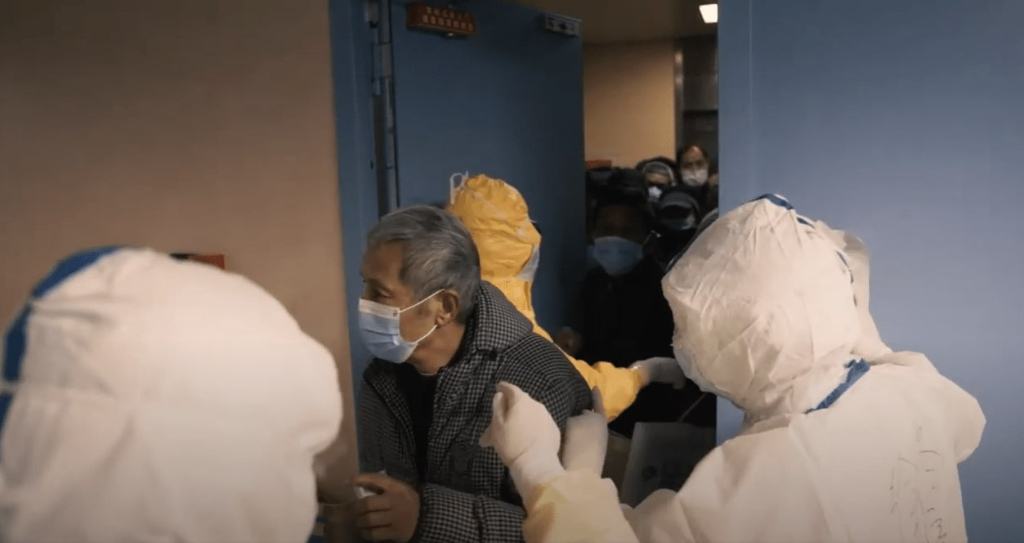
A young Mum diagnosed with the virus just before giving birth has a Caesarian after which her baby is isolated from her in an Intensive Care Unit (ICU). A wife is kept under observation in the nearby women’s ward from which she’s not allowed to physically visit her husband has a severe case of the virus from which he may or may not recover. An old man with dementia refuses to stay in his room and keeps wandering around the hospital building where he’s not supposed to be. A nurse logs and disinfects ID cards and mobile phones of the deceased so as to return them to the bereaved families.
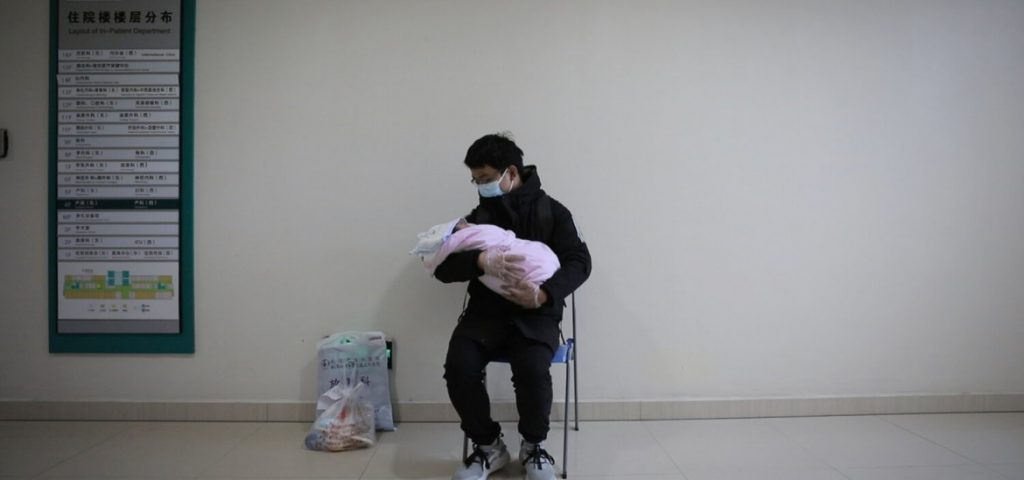
Far more harrowing is a staff member who wants to enter the room where her father has just died but is refused access and held back by colleagues whilst bursting into tears – this comes right at the start of the film and is incredibly distressing to watch (although no doubt it was far more distressing for the person concerned). Placing this at the beginning allows for transition to more optimistic stories as the health care professionals carry out their work and help some of their patients to recover. There’s a sense of staff and patients fighting the pandemic together and achieving a series of small victories.
The hand to mouth nature of the narratives makes the proceedings quite tough going at times. Perhaps there were a lot of far more depressing stories with less happy outcomes that either were filmed and not used or indeed were never filmed in the first place. That said, what reaches the screen is a testament to both health workers doing what they do in appalling circumstances and ordinary people fighting to survive a potentially lethal virus. If 76 Days is hard to watch in places and compelling in others, it proves consistently fascinating.
76 Days is out on VoD in the UK from Friday, January 22nd.
Trailer:
